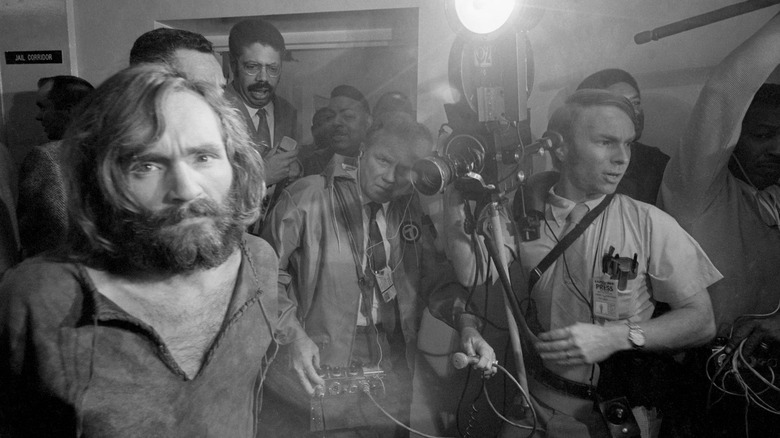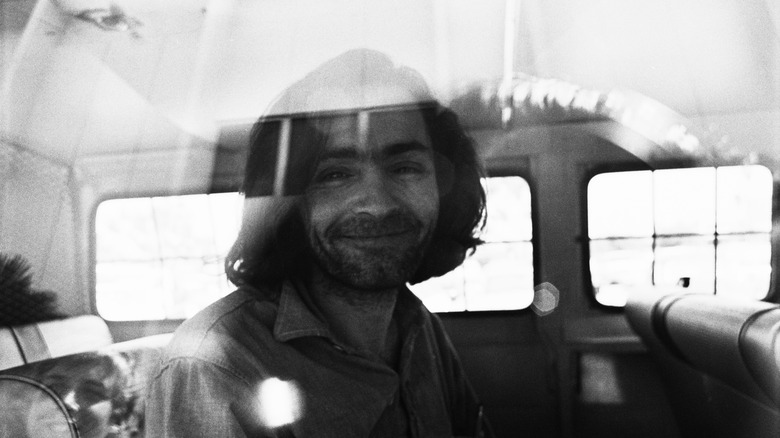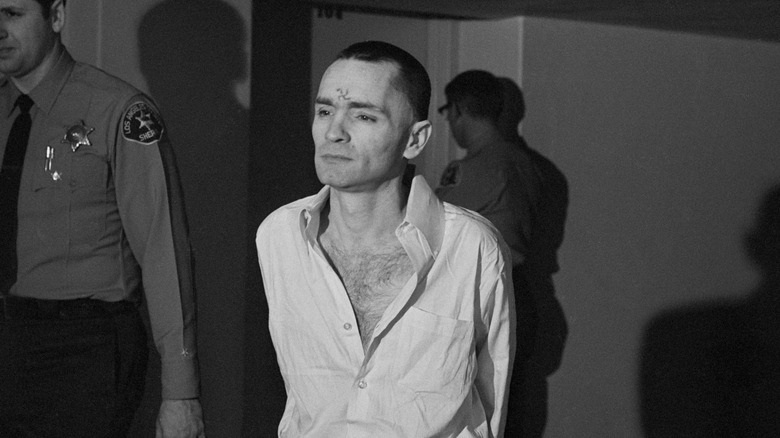How Was Charles Manson Caught?
If you don't know the generalities of Charles Manson's criminal case, you might recognize certain details: the swastika between Manson's crazed eyes, something-something murderous commune and cult, or something-something "Helter Skelter." Or, you might even think of his goth-turned-glam namesake, Marylin Manson. But amidst all the Charles Manson articles and exposés, documentaries, and testimonials, one pertinent, meaningful question stands above the rest: How was this guy actually caught?
By the time he was arrested in 1969, he'd already spent about half of his 32 years in prison, as a timeline of his life on Famous Trials depicts. He'd spent many of those years imprisoned for violent crimes ranging from armed robbery to sexual violence and auto theft. As Biography says, his probation reports described him as "constantly striving for status and securing some kind of love" and "safe only under supervision." He'd only needed a year to build up his cult, "the Family," before dispatching its members in August 1969 to murder "beautiful people" around Hollywood, per Biography. Amongst them was pregnant actress Sharon Tate.
Manson and his crew were arrested a couple of months later in October 1969, but not because of the murders — no one knew who they were at that point. As Biography says, police arrested them on suspicion that they'd vandalized Death Valley National Park. They were holed up in Barker Ranch — located within the park — and once arrested they were charged with auto theft (per CNN). This led authorities to uncover the truth of their actions.
A lucky desert arrest
If the basic facts around Charles Manson's lucky desert arrest seem strange, then the specifics will seem even stranger. Having murdered around 35 people around Hollywood — and intending to murder more like Elizabeth Taylor, Frank Sinatra, and Steve McQueen — Manson and his devotees retreated to their desert hideout, Barker Ranch. There, they believed they would wait out the apocalypse in a hidden, subterranean city dubbed "the bottomless pit" and emerge onto the ravaged Earth to rule the planet, as Life explains. As we can see on Google, Barker Ranch is now a scrabbly patch of hard desert littered with broken shacks. It's also a tourist site.
Back then, Barker Ranch didn't look very different. CNN says that the drive out to the "last redoubt of the gaggle of hippies" — as The Guardian puts it — requires four-wheel-drive to traverse the craggy terrain of a narrow Death Valley passageway called Golar Wash. Police made the journey to Barker Ranch in 1969 and found Manson hiding in a cupboard under a sink. As we can read in "The Last Charles Manson Tapes: Evil Lives Beyond the Grave," it was Manson's followers themselves who attracted authorities to the cult's remote hiding spot. They went in and out of Barker Ranch, tearing up the desert on dune buggies fastened with roll bars and machine gun mounts.
Dreams of dead, beautiful people
Once in custody, Charles Manson's followers once again blew the lid on themselves. Susan Atkins — one of the fervent four who committed the prominent murders of Sharon Tate and others — let slip to a fellow cellmate that auto theft "was not the limit of their crimes," as Time puts it. Later on Atkins said that they committed their murders "because we wanted to do a crime that would shock the world, that the world would have to stand up and take notice," per CNN. Per Biography, she also confessed that she'd wanted to cut out Tate's unborn baby. During their trial, she and the others giggled and glanced around, and along with Manson showed not the slightest regret.
Even back when Manson's followers committed their murders, the leader chided them for "sloppy" work, such as using Tate's blood to write the word "pig" on her front door, per Biography. But thanks to their continued sloppy behavior — including riding dune buggies and speaking to a cellmate — Manson, Atkins, Patricia Krenwinkel, and Leslie Van Houten received death penalties in 1971. California abolished its death penalty in 1972, however, and all sentences were commuted to life in prison. Linda Kasabian received immunity for testifying against her fellow cultists and died in January 2023. Manson died in prison in 2017. Before the end he said, "Maybe I should have killed 400 or 500 people, then I might have felt better," per The Guardian.


